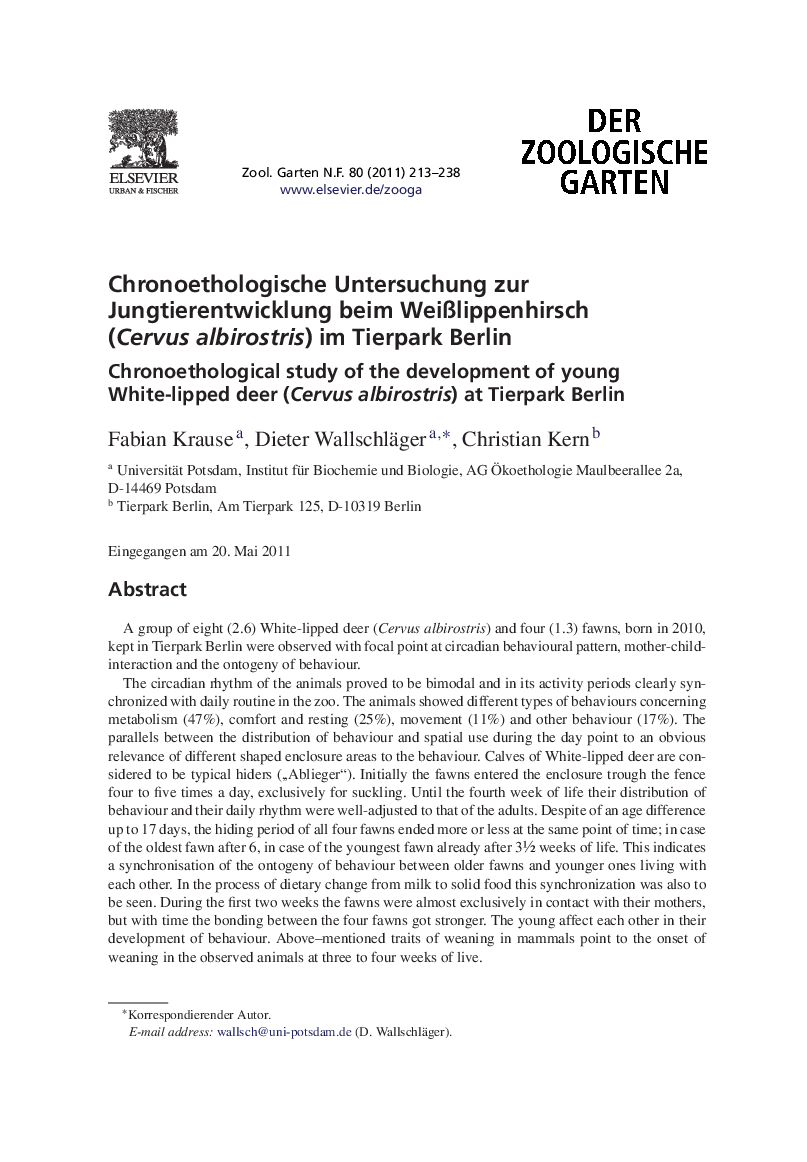| Article ID | Journal | Published Year | Pages | File Type |
|---|---|---|---|---|
| 2472958 | Der Zoologische Garten | 2011 | 26 Pages |
A group of eight (2.6) White-lipped deer (Cervus albirostris) and four (1.3) fawns, born in 2010, kept in Tierpark Berlin were observed with focal point at circadian behavioural pattern, mother-child-interaction and the ontogeny of behaviour.The circadian rhythm of the animals proved to be bimodal and in its activity periods clearly synchronized with daily routine in the zoo. The animals showed different types of behaviours concerning metabolism (47%), comfort and resting (25%), movement (11%) and other behaviour (17%). The parallels between the distribution of behaviour and spatial use during the day point to an obvious relevance of different shaped enclosure areas to the behaviour. Calves of White-lipped deer are considered to be typical hiders („Ablieger“). Initially the fawns entered the enclosure trough the fence four to five times a day, exclusively for suckling. Until the fourth week of life their distribution of behaviour and their daily rhythm were well-adjusted to that of the adults. Despite of an age difference up to 17 days, the hiding period of all four fawns ended more or less at the same point of time; in case of the oldest fawn after 6, in case of the youngest fawn already after 3½ weeks of life. This indicates a synchronisation of the ontogeny of behaviour between older fawns and younger ones living with each other. In the process of dietary change from milk to solid food this synchronization was also to be seen. During the first two weeks the fawns were almost exclusively in contact with their mothers, but with time the bonding between the four fawns got stronger. The young affect each other in their development of behaviour. Above–mentioned traits of weaning in mammals point to the onset of weaning in the observed animals at three to four weeks of live.All in all the behavioural development of White-lipped deer obviously depends on physiological needs and abilities as well as social environment.
